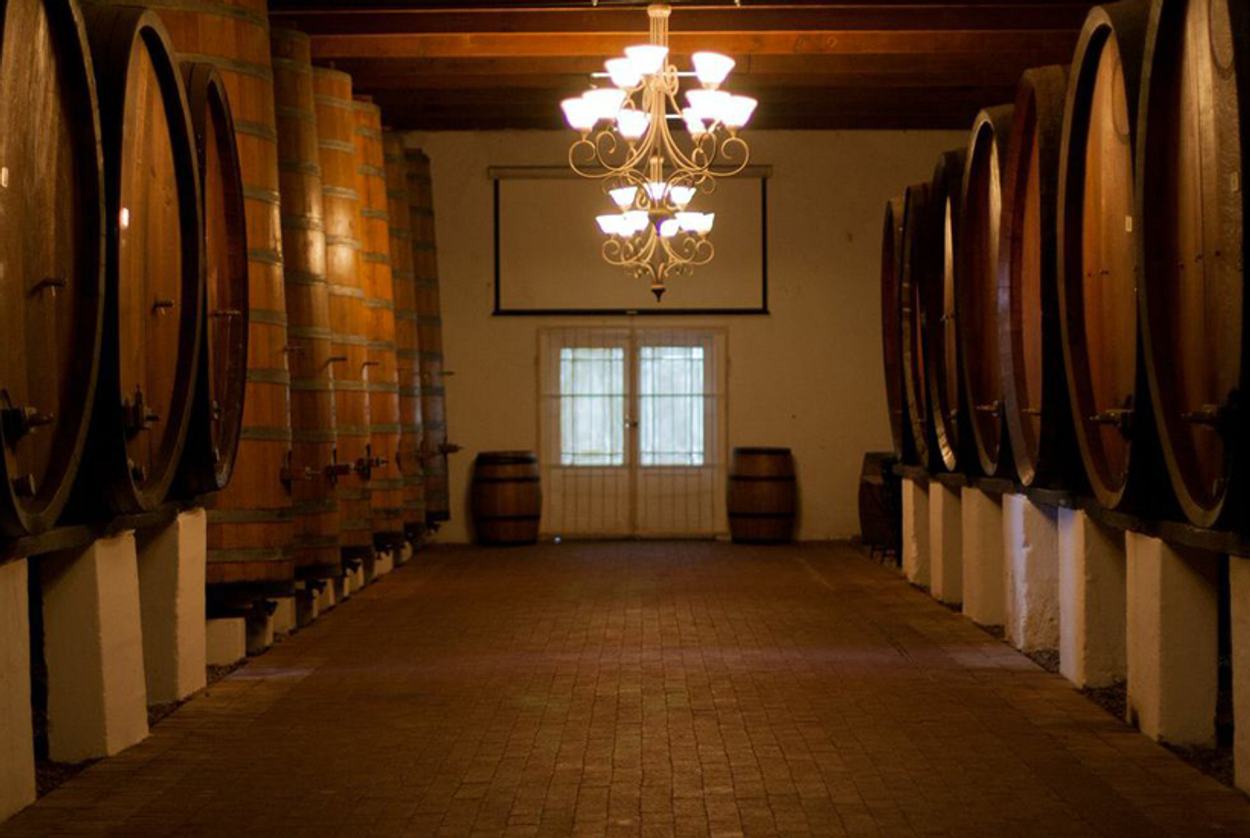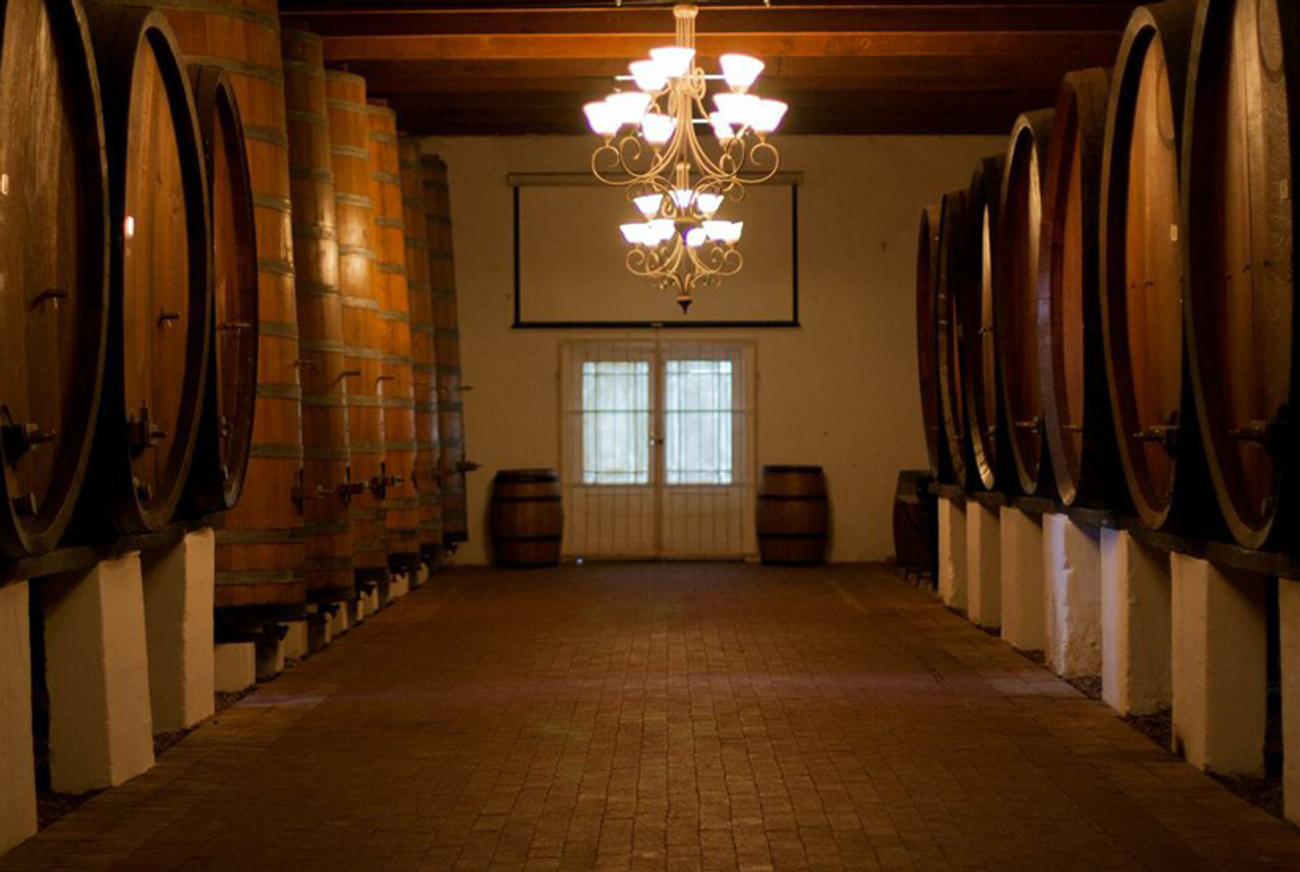South African Cousins Make Wine and Cheese With an Environmental Conscience
Two neighboring wineries share more than family roots and lines of kosher products. They’re also both carbon-neutral.




In 1902, a penniless Jewish refugee from Lithuania named Charles Back arrived by ship in Cape Town, South Africa. He initially found work as a dockhand but soon realized his true calling as a vintner. Making wine became the Back family’s business and has remained so for a century.
Today one of his grandsons, Michael Back, runs the Backsberg Estate Cellars winery in the foothills of the rugged, quartzite Drakenstein Mountains, 35 miles northwest of Cape Town. And another one of his grandsons, Charles Back II, operates the neighboring Fairview Wine and Cheese. These cousins share more than a family lineage; they are both pioneers in carbon-neutral agriculture, making their products—including kosher products—with minimal impact on the environment.
“We’ve enjoyed the fruit of the land for decades,” Simon Back—Michael’s son, and director of marketing for Backsberg—told me in a recent interview at the winery. “And we’re guilty of not always putting back that which we took.”
***
Businesses become carbon-neutral by measuring their emissions, reducing them as much as possible, and offsetting the remainder through tree-planting and other carbon-reducing actions. The initial measurement is done by an outside firm that audits core activities including processing, shipping, heating, cooling, and travel. One of those firms is London-based Carbon Neutral Company, managed by Jonathan Shopley. While some of his clients, he said, go carbon-neutral to influence politicians or gain environmentally conscious customers, carbon-neutral businesses can have a real impact on the environment by reducing the amount of greenhouse gases they emit into the atmosphere, thereby helping to combat climate change.
No single company can solve the problem, he acknowledged: “If nobody else does it, and I’m the only one, it’s not going to save or solve the issue,” Shopley told me in a recent phone interview. “But if nobody takes a leadership stance, we’ll never crack it anyway.”
Backsberg started its green journey in 2005. Fuel and electricity accounted for 80 percent of its emissions, so to become carbon-neutral the winery tackled its energy problem first. It installed a biomass boiler to enable the replacement of fossil fuels with waste wood. The boiler produces hot water for cleaning, sterilization, and the running of a heat exchanger that converts hot water and steam into energy to cool the water that runs the winery’s refrigeration. Currently, much of Backsberg’s energy is free, because the waste wood is being supplied gratis by a neighboring sawmill.
“We are taking waste off his hands and he’s only too happy, but going forward people are going to see that as a resource, so we’ve got in place plans to produce our own biomass in the form of woodlots,” said Simon, who notes that Backsberg grows mainly eucalyptus trees that grow in poor soil and release a lot of heat during combustion. Backsberg is also experimenting with growing prickly pears and bamboo. “We’re very cognizant of not building a system where one day the feedstock suddenly has a value that we can’t compete with.”
A carbon audit is done annually, and any excess carbon emissions are offset through a massive indigenous tree-planting program on Backsberg land and in the neighboring community of Klapmuts.
Backsberg became the first carbon-neutral winery in South Africa, winning a 2011 Greenpeace award for climate-change leadership. The next goal is to become energy self-sufficient within five years. While Backsberg is not yet ready to go off the grid and rely totally on locally produced energy, it is moving in that direction. According to Simon, the winery is implementing a more efficient, European grape-growing system, called lyre trellising, which allows vines to be planted closer together and trained to climb in a V-shape, yielding a double hedge for more efficient production. Other Backsberg efforts include installing skylights in the winery, transitioning to smaller trucks and tractors, and bottling wine in lightweight glass bottles and plastic.
Although the term “carbon neutrality” creates the impression of ecologically healthy production, South African environmentalist Raymond Auerbach argues that “carbon-neutrality is not a neutral term.” A professor of soil science and plant production at Nelson Mandela Metropolitan University, east of Cape Town, Auerbach agreed that Backsberg is pioneering energy conservation, but he said that being carbon-neutral is not enough: “Farms should be carbon positive and organic.”
Simon disagrees, saying that organic farming doesn’t take into consideration a business’s entire impact on the environment. “Farming organically has nothing to do with how you’re bottling your wine,” he said. “If you see an organic wine that’s bottled in heavyweight glass, for me, that’s missing the point.” He maintains a balance must be struck between environmental efforts and commercial reality.
***
Fairview has been certified carbon-neutral by the Carbon Protocol of South Africa since 2011—making it the country’s first carbon-neutral cheese producer. The manager of its cheese factory, Louis Lourens, said the decision was made “because it was the right thing to do” for the present and a prudent move in an increasingly environmentally conscious world.
Fairview’s main carbon hog was boiler fuel, used to heat water for pasteurization. Twenty-four solar panels on the factory roof now heat the water from roughly 70 degrees to about 140 degrees Fahrenheit before it reaches the boiler, saving up to one-third of Fairview’s energy consumption. Another 15 percent savings comes from new, energy-efficient equipment. The remaining carbon footprint is offset by planting trees and donating carbon-friendly light bulbs to poor neighborhoods. “It’s all calculated by the audit company,” explained Lourens. “They would say you’ve reduced by so much. For you to be carbon-neutral, you need to plant so many trees and change so many light bulbs in disadvantaged communities.”
Fairview is not only a pioneer in carbon neutrality, but it also produced the first goat-milk cheese in South Africa in the 1980s. Today it is known for (nonkosher) wines and an array of more than 20 cheeses—all certified kosher and halal. Although most traditional cheeses are made with an animal enzyme called rennet, to speed coagulation and separate curds from whey, Fairview uses a microbial, vegetarian enzyme instead, rendering the cheeses kosher.
Fairview’s flagship product, Roydon Camembert, won five gold medals at the World Cheese Awards in the United Kingdom, most recently in 2008. Its more unusual products include a sweet, cheesecake-like white rock cheese blended with green figs.
Fairview is as famous for its setting and architecture as it is for its wine and cheese. Its red brick goat tower encircled by a slatted steel ramp has inspired multiple copies around the world and is a recreational climbing spot for animals. “Goats are inquisitive animals that like to climb,” said Lourens, “In-house, we joke about it being their vacation spot.”
Fairview’s wine and cheese tasting room is housed in an expansive Cape Dutch colonial with tall, arched windows and a rounded gabled grand entrance. Inside, knotted wooden fixtures and a goat-horn chandelier highlight the master tasting room. A bronze framed, wall-mounted television runs a loop of goat imagery.
Fairview’s opulent tasting room contrasts starkly with the simplicity of Backsberg’s, which feels like a wine shop with white walls, a drop ceiling, and a bright red accent wall emblazoned with the company’s logo. A yellowwood table that runs the length of the room displays mammoth bottles of Klein Babylonstoren, Backsberg’s blend of Cabernet Sauvignon and Merlot. Wooden shelving units house wines for purchase, all stamped “carbon-neutral” on their necks.
Kosher wines make up a small part of the production of Backsberg’s 110-hectare vineyard, but they require special attention and a ritual kashrut inspector (mashgiach). These wines must be “cooked” to be considered mevushal, after which they can be handled by gentiles and still be considered kosher. But the ancient practice of cooking wine has been modernized with a truck-mounted flash-pasteurization system through which wines are pumped from a tank, heated, cooled, and piped back into the winery at a rate of 6,000 liters per hour. “It tends to take a little bit of the fruit off the bouquet,” Simon lamented, “but it’s not so much that it detracts from the wine. It lends itself to making lighter to medium-bodied wines.” Backsberg’s kosher line has five varietals, ranging from a sparkling brut with sharp bubbles to a sweet, fruit-forward Merlot. The kosher pinotage, a South African signature wine, has coffee and chocolate notes with dark berry flavors on the nose.
Although Fairview cannot export its kosher cheese to the United States, because no preservatives are used and the cheese has a short shelf life, Backsberg’s wines—kosher and nonkosher—are available in the States. They can be found in restaurants and wine shops in the New York area, for instance, including Tolani Eatery and Wine on Manhattan’s Upper West Side, a South African-style restaurant. Zaan Eksteen of Invoer Ekke, Backsberg’s distributor in New York, says that since he began selling the winery’s products in January of 2014, sales have been growing steadily, but “the total volume is still small, since Backsberg is an estate producer and total production is limited.”
Although 50 percent of Backsberg’s kosher wines are exported to the United States, Simon believes that the future for exported kosher South African wines is even brighter. “We haven’t yet tapped into the full potential of the American market,” he said, “and there are pockets around the world that we haven’t explored yet.”
***
Like this article? Sign up for our Daily Digest to get Tablet Magazine’s new content in your inbox each morning.
Maia Cheslow Baff is a user experience designer and a trained pastry chef from the Institute of Culinary Education in NYC. She is also the founder of the dessert blog Dessert-o-licious.
Maia Cheslow Baff is a user experience designer and a trained pastry chef from the Institute of Culinary Education in NYC. She is also the founder of the dessert blog Dessert-o-licious.